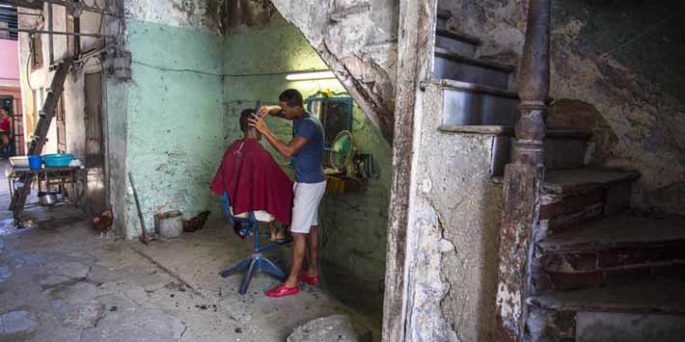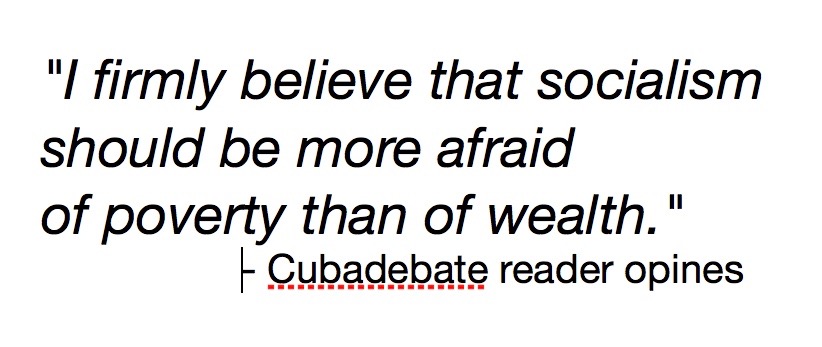
Non-state sector in Cuba: Back to the past?
HAVANA — When in December 2017 the Cuban government released details of the new rules — still not approved — for self-employed labor and non-agricultural cooperatives, many of us remembered the sad outcome of the incipient self-employment at the end of the 1990s.
At that stage of the so-called Special Period, the dynamic growth of entrepreneurs languished among restrictions and excessive control by the regulatory agencies.
The scenario is different today, of course. This time, autonomous work has gained the recognition of the very documents that guide the current process of socio-economic transformation. Even the will manifested by the nation’s top leadership seems different.
“Non-state forms of activity will not recede or stop,” President Raúl Castro has said on more than one occasion.
But a different intention (with possible realities that could resemble those of the 1990s) is perceived in the changes announced “to confront the illegalities and violations of the existing policy.”
Marino Murillo, who heads the Permanent Commission for the Implementation of the Guidelines, said that henceforth only one license per activity will be authorized. According to the regulation in effect since 2013, Cubans today can practice several trades simultaneously “so long as they comply with what’s established in the law.”
Although the former minister of the Economy did not say so expressly, apparently the measure seeks to prevent some workers from amassing too many riches. Something reasonable, in harmony with the socialist project that Cuba is building … if there weren’t mechanisms to regulate, such as tax collection.
However, what’s most worrisome here is the likely return to informal labor on the margins of legality. Think, for example, about someone who leases his front porch but also wants — or needs — to rent out his vintage car or open a coffee shop or even sell peanuts.
Another possible motive that accompanies the new restriction is that the future regulation integrates similar activities: 7 related to beauty care, 10 to the repair of various articles, and 12 costumed racconteurs hired by the Office of the City Historian, among others, said Marta Elena Feitó Cabrera, first vice minister of Labor and Social Security.
While this “reduces the existing dispersion and improves the availability of the trades,” which Murillo calls “a big accommodation,” it also warns of changes in the tax burden, which is inimical to those who only wish to assume only one of the bundled variants.
One example (among several) is the traditional barber in almost every neighborhood, as book-keeper Darién García points out. Why must the barber buy a more expensive license if all he needs is to cut hair? At present, a barber’s license includes hair-dresser, manicurist, makeup artist licenses and two other for beautician.
Logic indicates that this will represent a savings in paperwork for those who want a larger place of business.
In any case, the incongruities reaffirm what many experts have been advocating for a long time: the need to create a negative list. In other words, to specify the activities that the State willingly turns over to private individuals, without holding back the Cuban worker’s skills and talents.
Nevertheless, instead to expanding, the list shrinks. As a result of the aforementioned unification of some activities and the suspension of others, the 201 authorizations existing at present will be brought down to 122.
Among the good news, lessors can supply rental services to legal persons. In addition, bars become official. Bars today are very popular and sought after, but they work under the restaurant license “because of a misinterpretation in the service they can provide,” Feitó Cabrera said.
The proposed category defines (according to Murillo) just what constitutes a “bar” and proposes that the hours must be authorized by the Municipal Administration Council. Let’s hope that night-time idleness will be a well-understood expression and that its interpretation will not smother night-life in some districts.
A bird without wings?
Also with the goal of “rectifying any deviation that leads us away from the chosen road,” as Raúl said, the rules for the operation of non-agricultural cooperatives (NACs) will be improved.
According to Murillo, only 429 will remain in the experiment (!). This indicates that, at least in the near future, Cuba will have no cooperatives of a new kind.
The economist explained that, under the coming rule, the NCAs “may not engage in activities outside the province where they have their legal domicile” because their function is local development.
According to Darién García, who has done the accounting at several cooperatives, that measure implies a serious restriction for many of the young enterprises. He cites the case of two, approved by the Ministry of Industry. One of them engages in repairing a specific brand of sewing machine; the other repairs balances and scales.
Is there any province that uses enough of those items to make the associations profitable? The reality is that both enterprises are obligated to offer their services in several provinces.
The same happens with other enterprises that specialize in mountain climbing, air conditioning, and the rental and use of scaffolding for restorations. Many of them are unique in Cuba.
And there are more contradictions, because out of the total NCAs devoted to construction, the majority are located in Havana.
This disparity replicates in the geographic distribution of the cooperatives. The National Office of Statistics and Information reported in December 2017 that — out of the 439 existing cooperatives — 264 were in Havana, 68 in Artemisa, 19 in Matanzas, while all the other provinces have 14 in each (only 2 in Matanzas).
On the other hand, it was learned that the debated resolution will specify how many partners and how many workers an NCA can have. It will also limit the income of its members, which may not exceed the difference between the lowest earner and the highest earner.
Murillo made it clear that the purpose is to regulate the distribution of the revenue, to prevent repetitions of a case where the president of an NCA was paid 37,000 pesos and a partner only 3,000 pesos — a practice of private enterprises.
So, why do false NACs emerge? In García’s opinion, learning the practices of coooperativism is still shaky. Plus, “when a Cuban wishes to open a private business, he realizes that, as a self-employed worker, he will have no legal personality, tax benefits or access to the limited wholesale market.”
That is why people emigrate toward the option of cooperativism, but with the mentality of a small business, García says. The NCAs that truly respect the principles of that form of endeavor must be very few in Cuba, considering that sometimes they are used as a Joker [playing card] because of their tax guarantees, he concludes.
The truth of the matter is that the opening of diverse forms of endeavor in Cuba has served to foster the need to work. It’s worth mentioning that about 68 percent of the people in the non-state sector had no prior labor record. In this path, they found a way to satisfy economic needs for themselves and their families, as well as personal realization and independence.
In [the website] Cubadebate, a reader suggests to the decision-makers: “Talk to the entrepreneurs and listen to their concerns. Open a debate. Don’t impose criteria. Work out the accounts and, if necessary, amend them. But don’t continue to postpone decisions or put obstacles in our path. After all, we are the people.”
Another reader summed it all up: “I firmly believe that socialism should be more afraid of poverty than of wealth.”

